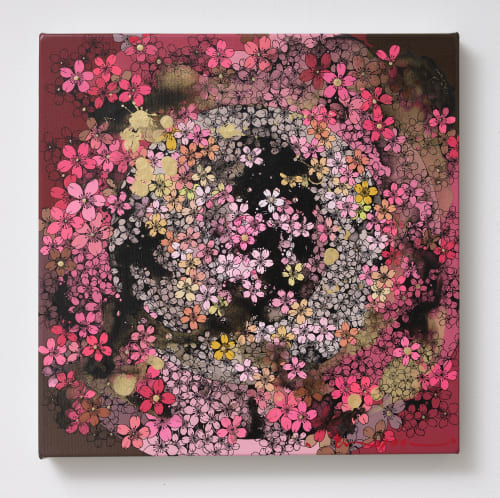The Japanese-born Aotearoa based artists Shintaro Nakahara (b.1972 Saitama, Japan) and Yoshiko Nakahara (b.1978 Kanagawa, Japan) were each formally trained in separate art schools in Tokyo – Shinataro at Tama Art University and Yoshiko at Musashino Art University. Their practices are concerned with precision and planning and they share an intuitive approach to mark making.
Through years of collaboration, the artists have developed a unique process where they each contribute distinct elements to their works, with the finished product only possible through their alliance – a process they have termed ‘the third artist’.
In her essay, Lana Lopesi describes the Nakahara’s process as a ‘mental collaboration’, a series of questions and answers that go back and forth through line and colour. Shintaro uses pure aesthetic forms that mimic calligraphy; using bright, solid colour and rigidly controlled lines that suggest gestural actions. Yoshiko works over this, often exclusively with black ink, with painstakingly built and small-scale individual strokes and washes. The artist uses this mark-making process to create multiple levels of patterns which often result in natural forms. This complex process reveals the unusual collaboration between the artists and the unique contemplative nature of their work.
Both Shintaro and Yoshiko have worked as horologists (watchmakers and specialists in the study of timekeeping) alongside their painting careers. There are distinct parallels between their painting practice and the art of watch making: a precision and an intricacy that is shared, along with a fascination with the fleeting nature of time and how it is measured and valued.
The Nakahara’s fascination with time is a recurring theme; the artists often referencing the natural world, and their works encapsulating a contemplative sense of ‘deep time’. Similar feelings emerge when looking at the stars or watching waves break on a shore. Their paintings hold a cosmic energy and evoke a sense of the immeasurable complexity and vastness of the universe.
